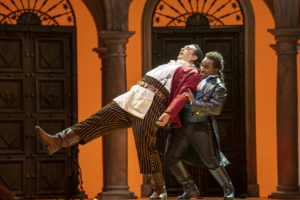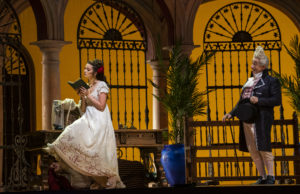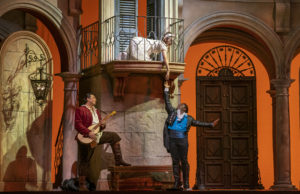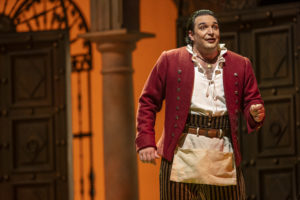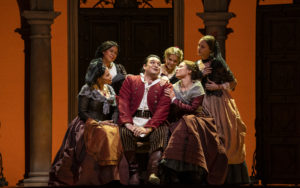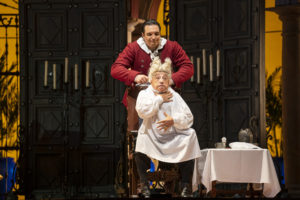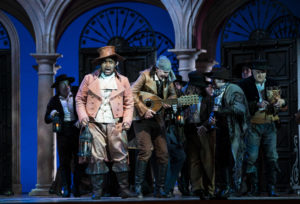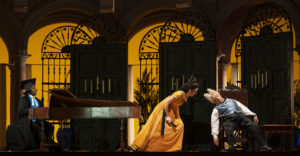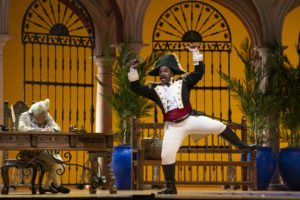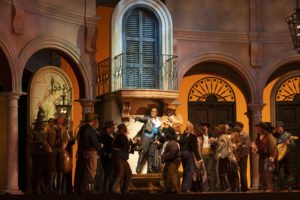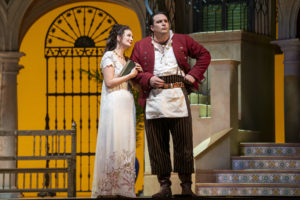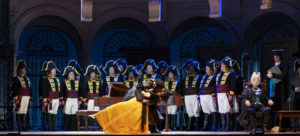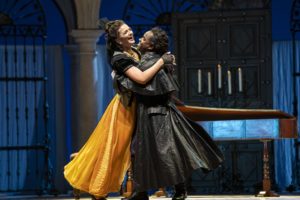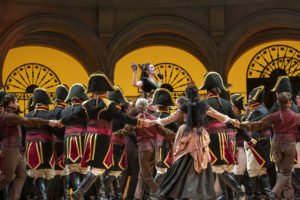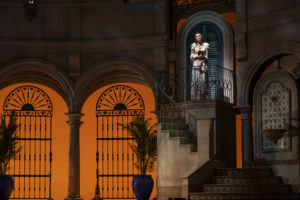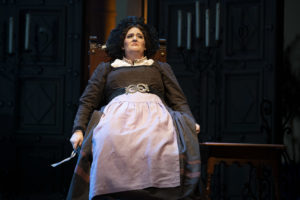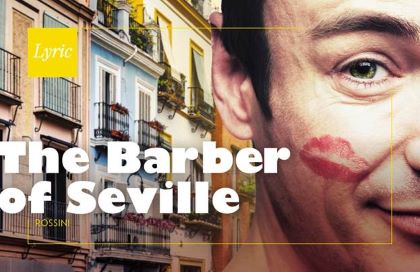
A SHEER DELIGHT; A CUT ABOVE
Opening night of the season is typically an opportunity to enjoy some people watching on the red carpet, a classic, accessible, and not-too-serious opera, and an early night (since the opera starts at 6pm). Gioachino Rossini’s Il Barbiere di Siviglia (1816) delivered superbly on all three counts, despite the day’s grey, rainy weather.
But who could fail to be in high spirits with the energetic Sir Andrew Davies conducting and the boisterous baritone Adam Platchetka in the lead role? One of the funniest operas ever created, The Barber of Seville follows the machinations of Figaro, a matchmaker who’s trying to set up Count Almaviva with Rosina, a young girl who lives with Dr. Bartolo, one of Figaro’s clients. The topsy-turvy plot finds Count Almaviva taking on multiple fake personas in order to dupe Dr. Bartolo and marry his beloved Rosina.
It was worth remembering that The Barber of Seville is only the first of a trilogy of plays written by Pierre Beaumarchais (1732-1799). Although Giovanni Paisiello had composed an earlier operatic version, Rossini’s quickly surpassed it in popularity. The middle work, The Marriage of Figaro, was turned into a canonical opera by Mozart, last seen on the Lyric stage at the opening of the 2015/16 season, also starring Plachetka as Figaro. Finally, The Guilty Mother, Beaumarchais’ final instalment, has also had multiple operatic adaptations, though none have been very popular.
While Plachetka might have been a tad awkward as Mozart’s more romantic Figaro, his large size (in contrast to the diminutive Lawrence Brownlee) and goofy grin serve him stupendously as Rossini’s rather flamboyant Figaro (as they did also as Papageno in Mozart’s Magic Flute). Together with his outsize frame, the vim and volume of Plachetka’s voice add up to a magnificent opening act entrance. Rossini’s colorful vocal writing in Figaro’s aria “Largo al factotum della citta”, especially the exuberant lalalas, sound entirely natural (and droll) coming from Plachetka. Moreover, his voice blended beautifully in combination with the rest of the cast, especially Brownlee’s lissome tenor. In past productions, Brownlee’s voice has sometimes been overpowered, but not in this one; a perfect balance has been achieved between the orchestra, chorus, and soloists. Brownlee’s Count captures and holds the audience’s attention easily with his antics, from posing under Rosina’s window to playing a drunken soldier.
The other odd couple of the cast, Italian baritone Alessandro Corbelli as Don Bartolo and French mezzo-soprano Marianne Crebassa as Rosina, equally show a talent for bel canto and opera buffa. Corbelli has excelled in numerous comedic roles at Lyric, most recently as Don Alfonso in Mozart’s Cosi fan tutte (2017/18). He does a few unexpected things in this production, such as speaking in English and slipping out of his wig, that squeeze extra laughs out of an already LOL production. And Rossini’s rapid-fire vocal writing puts Corbelli’s technique through the wringer.
Crebassa facilely maintains her dignity in the face of Don Bartolo’s lecherous advances and displays her girlish agility by climbing over a bench-back in ankle-length dress and heels. Her opening aria “Una voce poco fa” charms with its lighthearted lyrics and svelte stylings, while her nimble coloratura in later scenes dazzles and delights. Indeed, part of what makes this opera so endlessly entertaining is the way Rossini writes comedy into the music, making Rosina’s coloratura sound like laughter.
Not to be omitted are the two Lyric debuts in this production: Krzystof Baczyk as Don Basilio and first-year Ryan Opera Center member Mathilda Edge as Berta. The Polish bass’s voice is wonderfully clear and rich, while Edge’s soprano is spritely and sweet. No doubt, Lyric audiences will be seeing more of Edge in the near future, but it is to be hoped that Baczyk becomes a regular, too.
From Plachetka and Brownlee to Corbelli and Crebassa, The Barber of Seville’s principal soloists bring a remarkable physicality to their roles, thanks to Rob Ashford’s direction. A former ballet dancer, Ashford brings a creative eye for movement and choreography to the production so that there is never a lull or a dull moment. Set designer Scott Pask beautifully evokes the opera’s 18th century Spanish setting with wrought iron grilles, heavy wooden furniture, decorative tiles, and brightly-colored backgrounds. And Lyric’s incomparable wigmaster Sarah Hatten tops Corbelli’s head with the most ridiculously silly wig.
Lyric’s newest production of Rossini’s The Barber of Seville is simply delightful and a must-see! Any criticisms are too minor to bother mentioning. So go, see it twice, see it a third or fourth time and bring a friend. I can’t recommend this show strongly enough. Stay tuned for more Italian opera: Verdi’s Luisa Miller opens October 12.
photos by Todd Rosenberg
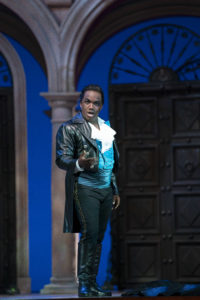 The Barber of Seville
The Barber of Seville
Lyric Opera of Chicago
Civic Opera House, 20 N. Wacker Drive
ends on October 27, 2019
for tickets, call 312.827.5600 or visit Lyric Opera
for more shows, visit Theatre in Chicago
